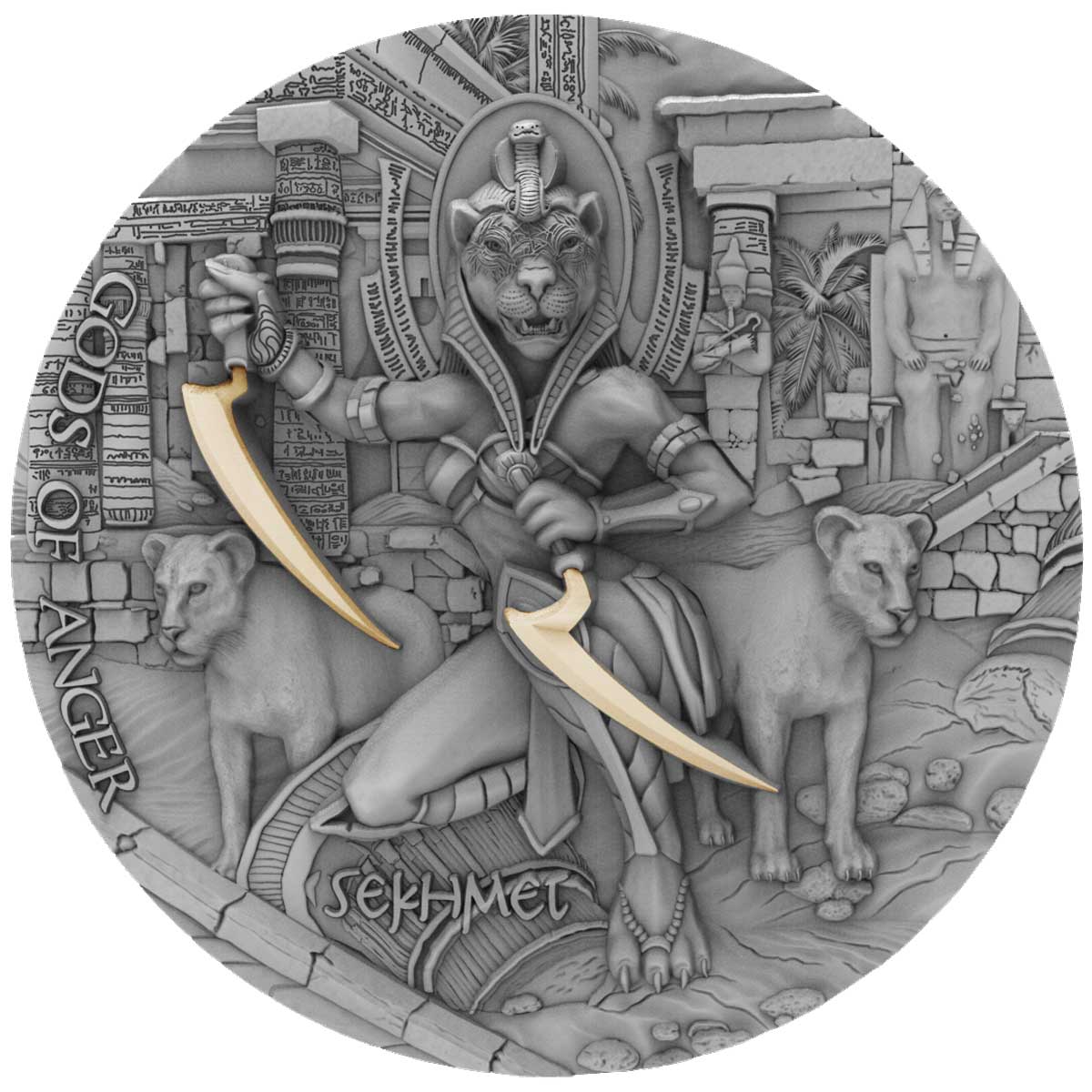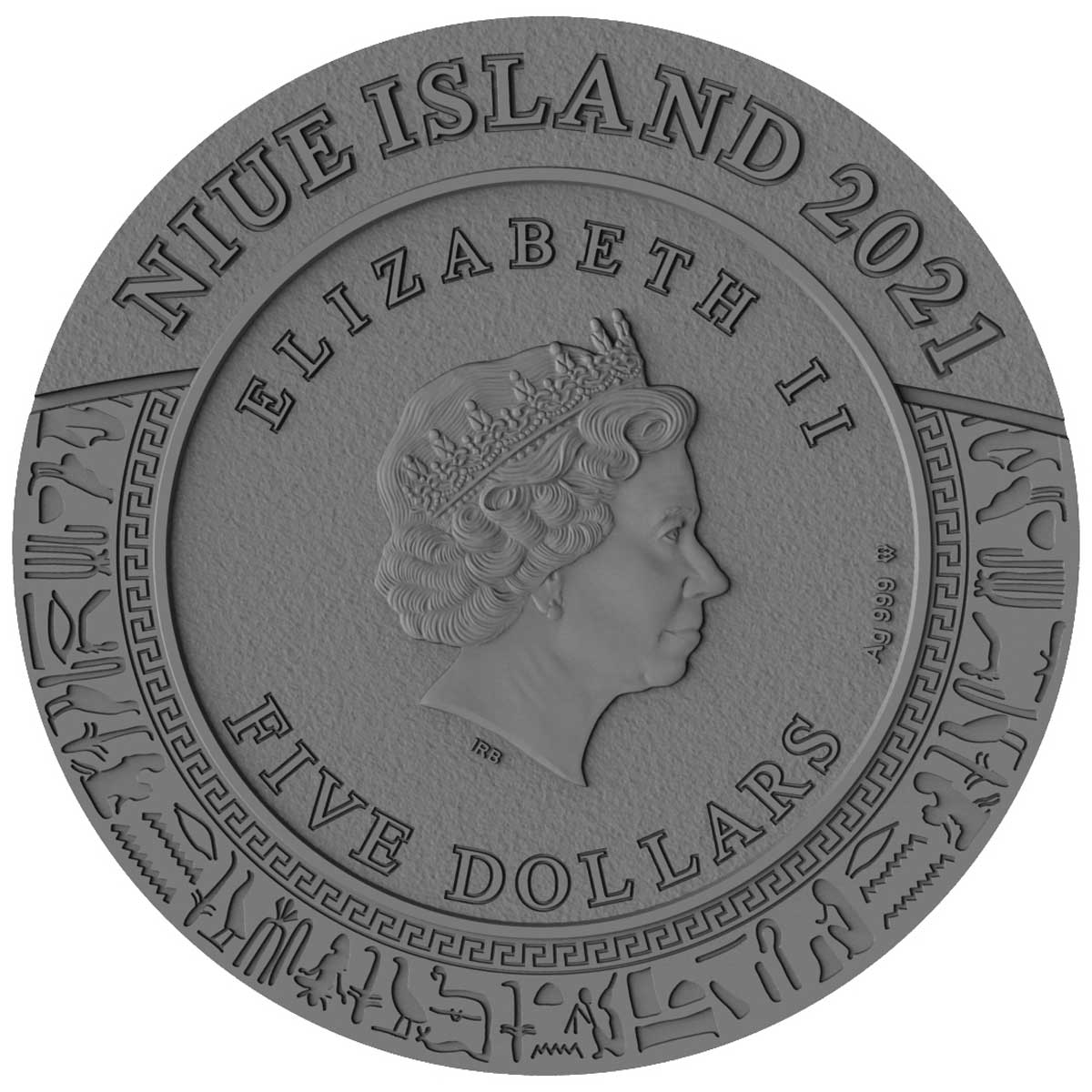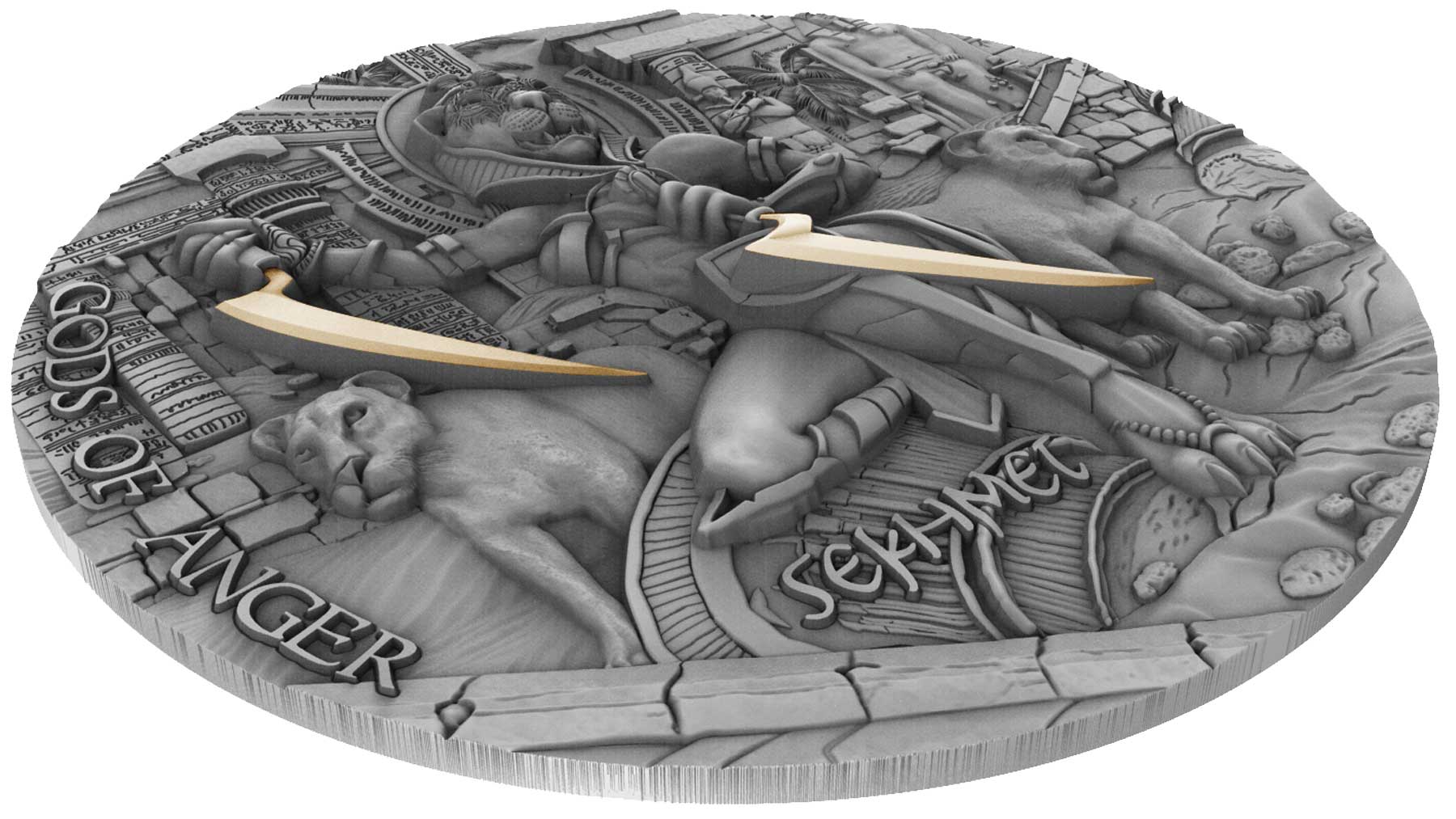Sekhmet, daughter of Ra and the warrior goddess of healing is the third Gods of Anger coin
Always a relatively early issue on the annual calendar, the Mint of Poland and Pela Coins have launched the third of their striking ‘Gods of Anger’ coins looking at the Ancient Egyptian pantheon of deities. The series debuted in 2019 with Anubis, and continued in 2020 with Horus. This time around, it’s Sekhmet, the lion headed goddess.
One of the Mint of Polands copious mythology coin ranges, it continues the signature two-ounce, rimless, high-relief strike that collectors have taken too so enthusiastically. It’s easy to see why. The format is just big enough to allow designers to imbue the coin with a good sense of depth, but remaining relatively affordable, at least at launch. One thing these coins have is a sense of the third dimension.
Sekhmet is one of the more striking figures in the Egyptian pantheon, carrying on the habit of giving a human body the head of an animal – in this case a lioness. As the goddess of destruction, she was never going to be shown carrying a cream bun, so a couple of wicked looking sickle-style blades sit in her grasp, nicely gilded and creating a focal point. As you should expect by now, the whole face of the coin is jam packed (I’ve got cakes on the brain today…) with architecture, finely detailed, with a pair of lionesses flanking Sekhmet.
It’s another terrific release. Ancient Egyptian culture is quite stunning in appearance, such artistic geniuses as H.R. Giger citing its inspiration on their work, and it’s great to see it done with a bit of passion. A coin that continues this excellent series in style, it has a mintage of 500 pieces and is available to pre-order now. Check out other releases in our Thematic Guide to the range.
SEKHMET
One of the most significant goddesses of ancient Egypt. Sekhmet was a leonine deity usually depicted as a woman with the head of a lion. Her name means “Powerful” and is usually interpreted as “The Female Powerful One”. She was a goddess of destruction and healing, of desert winds and cool breezes. She was the daughter of Ra who appears in one of the most important stories concerning the Eye of Ra/Distant Goddess motif.
When Ra became tired of the sins of humanity, he sent Sekhmet to destroy them. She ravaged the land until the other gods implored Ra to stop her before humans were destroyed completely. Ra had a vat of beer dyed red to attract Sekhmet’s blood lust and left it at Dendera where she drank it and fell into a deep sleep; when she woke she was the benevolent Hathor. Sekhmet continued to exist in her leonine form, however, and was the patron deity of the military for her powers of destruction and vengeance. She was known as “Smiter of the Nubians” in this regard but she also brought natural disaster.
Plagues were known as “Messengers of Sekhmet” or “Slaughterers of Sekhmet”. In the same way that she could bring the desert winds, she could deflect them, and the same with pestilence; just as she had brought the plague, she could cure it and was known as “Mistress of Life” in this capacity (and so was frequently invoked in healing spells and incantations by ancient doctors). She was closely associated with other leonine deities such as Bastet and Pakhet and was thought to be the aggressive, violent aspect of the goddess Mut.
Mark, Joshua J. “Egyptian Gods – The Complete List.” Ancient History Encyclopedia. Ancient History Encyclopedia, 14 Apr 2016. Web. 12 Feb 2021.
| SPECIFICATION | |
| DENOMINATION | $5 New Zealand (Niue) |
| COMPOSITION | 0.999 silver |
| WEIGHT | 62.2 grams |
| DIMENSIONS | 45.0 mm |
| FINISH | Antique |
| MODIFICATIONS | Ultra high-relief, gilding |
| MINTAGE | 500 |
| BOX / C.O.A. | Yes / Yes |





Leave A Comment